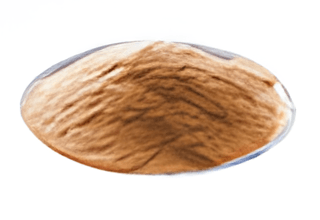Copper concentrate is a product made by processing/enriching copper ore, which usually has a relatively low metal content and is not suitable for direct metallurgical processing. Usually, copper content in concentrate varies from percentages in the teens to several tens of percent, which enables further processing in copper smelters and refineries. The cost of transporting products with a lower copper content (for example copper ore) basically eliminates them from trade in the global market (with certain exceptions), therefore it may be assumed that copper concentrate is the first product of processing copper ore that may be generally traded. As a result of metallurgical processes copper is produced as well as the by-products of processing (mainly precious metals, sulphuric acid, lead etc.).
Copper concentrates
The main participants of the concentrate markets are mines supplying the product on the market and smelters and refineries, for which the concentrates are materials for production. Trading companies also play a role on this international market, intermediating in the purchase/sale transactions and offering additional services expected by the parties.
Copper concentrates require processing into refined copper, which leads to incurring processing costs and the incomplete recovery of metals in individual production stages. Therefore, the transaction price should have a set of discounts as compared to quoted prices for refined copper. The benchmark of these discounts (for TC/RC) is determined during negotiations between the main producers of concentrates and their customers that is smelters and refineries.
| Molecular Weight | 63.55 |
|---|---|
| Appearance | Reddish Metal |
| Melting Point | 1085 °C |
| Boiling Point | 2562 °C |
| Density | 8.96 g/cm3 |
| Solubility in H2O | N/A |
| Electrical Resistivity | 1.673 μΩ-cm @ 20 °C |
| Electronegativity | 1.90 Paulings |
| Heat of Fusion | 13.26 kJ ·mol-1 |
| Heat of Vaporization | 300.4 kJ ·mol-1 |
| Poisson’s Ratio | 0.34 |
| Specific Heat | 0.39 kJ/kg K |
| Thermal Conductivity | 401 W ·m-1 ·K-1 |
| Thermal Expansion | (25 °C) 16.5 µm·m-1·K-1 |
| Vickers Hardness | 369 MPa |
| Young’s Modulus | 110–128 GPa |
Copper Concentrate Health & Safety Information
| Signal Word | Danger |
|---|---|
| Hazard Statements | H228-H400 |
| Hazard Codes | F |
| Risk Codes | 11 |
| Safety Statements | 16 |
| RTECS Number | GL5325000 |
| Transport Information | UN 3089 4.1/PG 2 |
| WGK Germany | 3 |
About Copper Concentrate
 Ametheus offers copper concentrate with a majority copper base component. Preparation of copper concentrate typically involves the removal of water from an copper solution. American Elements specializes in producing high purity Copper Concentrate with the smallest possible average grain sizes for use in preparation of pressed and bonded sputtering targets and in Chemical Vapor Deposition (CVD) and Physical Vapor Deposition (PVD) processes including Thermal and Electron Beam (E-Beam) Evaporation, Low Temperature Organic Evaporation, Atomic Layer Deposition (ALD), Metallic-Organic and Chemical Vapor Deposition (MOCVD). Copper concentrate is similar to powder in that it is made up of minute, dry particles of pure substance. Concentrate is also useful in any application where high surface areas are desired such as water treatment and in fuel cell and solar applications. Nanoparticles also produce very high surface areas. Our standard Concentrate particle sizes average in the range of – 325 mesh, – 100 mesh, 10-50 microns and submicron (< 1 micron). We can also provide many materials in the nanoscale range. American Elements produces to many standard grades when applicable, including Mil Spec (military grade); ACS, Reagent and Technical Grade; Food, Agricultural and Pharmaceutical Grade; Optical Grade, USP and EP/BP (European Pharmacopoeia/British Pharmacopoeia)and follows applicable ASTM testing standards.
Ametheus offers copper concentrate with a majority copper base component. Preparation of copper concentrate typically involves the removal of water from an copper solution. American Elements specializes in producing high purity Copper Concentrate with the smallest possible average grain sizes for use in preparation of pressed and bonded sputtering targets and in Chemical Vapor Deposition (CVD) and Physical Vapor Deposition (PVD) processes including Thermal and Electron Beam (E-Beam) Evaporation, Low Temperature Organic Evaporation, Atomic Layer Deposition (ALD), Metallic-Organic and Chemical Vapor Deposition (MOCVD). Copper concentrate is similar to powder in that it is made up of minute, dry particles of pure substance. Concentrate is also useful in any application where high surface areas are desired such as water treatment and in fuel cell and solar applications. Nanoparticles also produce very high surface areas. Our standard Concentrate particle sizes average in the range of – 325 mesh, – 100 mesh, 10-50 microns and submicron (< 1 micron). We can also provide many materials in the nanoscale range. American Elements produces to many standard grades when applicable, including Mil Spec (military grade); ACS, Reagent and Technical Grade; Food, Agricultural and Pharmaceutical Grade; Optical Grade, USP and EP/BP (European Pharmacopoeia/British Pharmacopoeia)and follows applicable ASTM testing standards.
